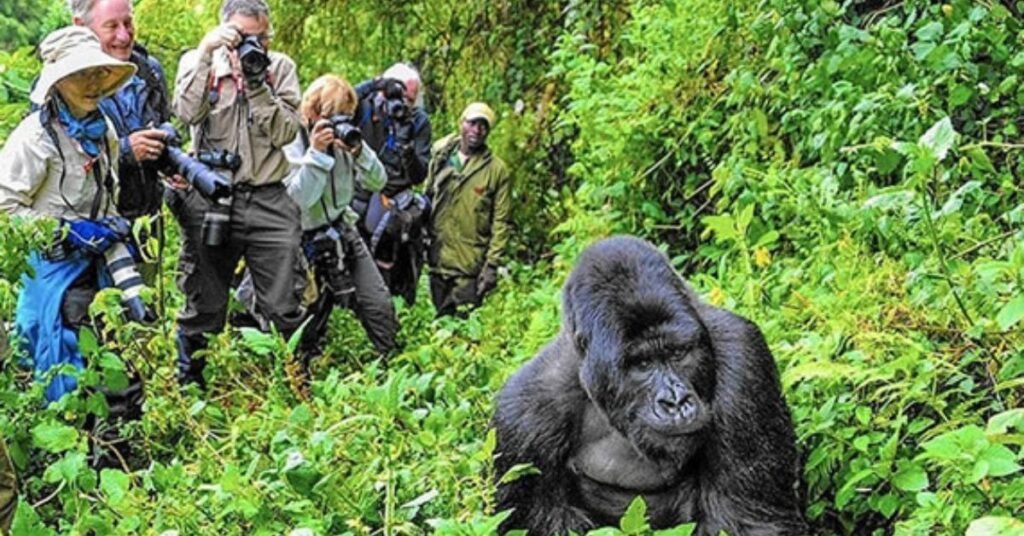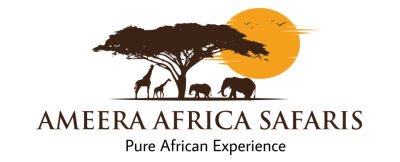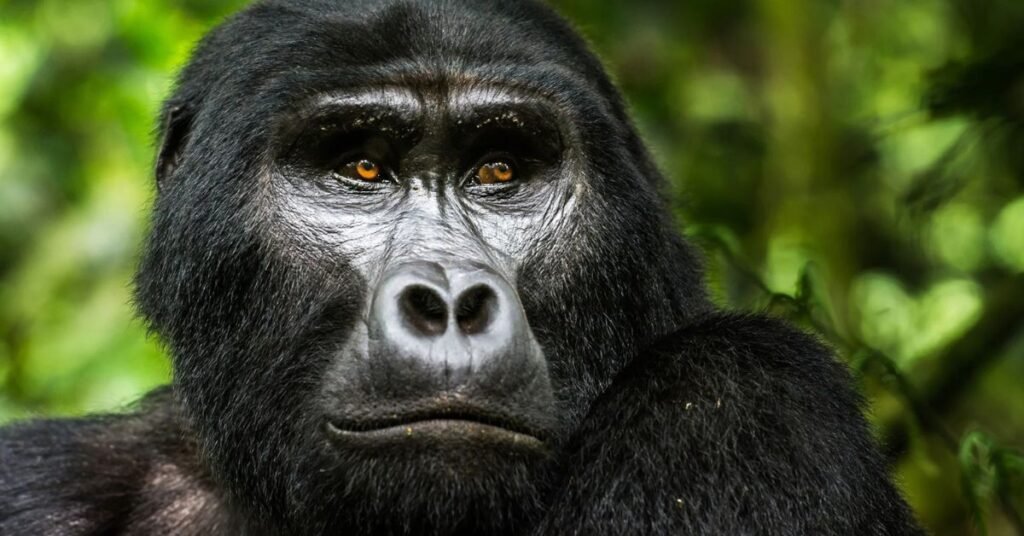
Choosing the best time for gorilla trekking can significantly enhance your experience, as seasonal variations impact accessibility, viewing conditions, and even trekking costs. With a bit of planning, you can ensure your trek is perfectly timed to witness these magnificent creatures up close.
For those eager to embark on this adventure, planning with Ameera Africa Safaris guarantees a safe, eco-friendly journey into Uganda’s stunning wilderness.
Uganda’s climate features two main seasons: the dry season and the rainy season. Understanding these seasons is essential for planning a gorilla trekking adventure, as each brings unique conditions to the trails and overall experience.
Both seasons offer remarkable experiences for gorilla trekking, but timing your visit based on these seasonal insights can enhance your safari in Uganda.
Uganda’s dry seasons, December to February and June to September, are widely considered the best times for gorilla trekking. These months offer the most favorable weather conditions, making the adventure more comfortable and accessible.
During the dry season, hiking conditions are optimal. Trails are less muddy, making it easier to navigate the steep, forested paths in Uganda’s gorilla habitats. Additionally, with more predictable weather, the likelihood of clear skies and sunny days increases, which adds to the experience and makes wildlife spotting easier.
Trekking in the dry season also means higher demand, as it aligns with Uganda’s peak tourism period. To secure your spot, it’s essential to book permits in advance through reputable providers like Ameera Africa Safaris, ensuring you get to explore the remarkable world of Uganda’s mountain gorillas.
Uganda’s rainy seasons, from March to May and October to November, also offer unique opportunities for gorilla trekking. While these months see more rainfall, they come with their own set of benefits for adventurous travelers.
One of the main perks of rainy season trekking is the fewer crowds on the trails, offering a more intimate experience with the mountain gorillas. Additionally, during this off-peak period, discounted rates are often available, making it a great choice for budget-conscious travelers. The lush, green scenery in the forest after the rains also provides a vibrant backdrop for photography and wildlife observation.
Trekking during the rainy season requires some extra preparation due to muddy and slippery trails. Proper gear, such as waterproof jackets, sturdy boots, and trekking poles, can make the journey much smoother. While the weather is less predictable, Ameera Africa Safaris ensures your trek is safe, guiding you through Uganda’s incredible national parks regardless of the season.
Choosing between peak and off-peak seasons for gorilla trekking in Uganda depends on your personal preferences and what you hope to get out of the experience. Here’s a breakdown of what each season offers to help you decide.
The peak season (dry months from December to February and June to September) offers comfortable hiking conditions and a high likelihood of clear weather, which can enhance visibility for wildlife sightings and photography. These months are ideal if you prefer stable weather, and the trails are often more accessible and manageable. Since it’s a popular time for trekking, you’ll have plenty of opportunities to connect with other travelers, though parks can be a bit busier.
In the off-peak rainy seasons, from March to May and October to November, you’ll find fewer crowds and discounted rates on permits and accommodations, which can make your Uganda safari experience more affordable. The forests are especially lush during these months, creating a stunning environment for photos. If you’re comfortable with a bit more adventure and don’t mind trekking in wet conditions, the off-peak season could be the perfect choice.
Whether you’re trekking during the dry or rainy season, it’s important to be well-prepared to ensure a comfortable and successful adventure. Here are a few essential tips to help you plan your gorilla trekking experience in Uganda:
During the peak season, permits for gorilla trekking can get booked up quickly, so it’s best to plan well in advance. We recommend securing your booking at least 6 months ahead of your preferred travel dates to ensure availability. Ameera Africa Safaris offers expert guidance and personalized itineraries to secure your spot and manage all bookings efficiently.
At Ameera Africa Safaris, we specialize in crafting memorable Uganda safari tours, including unforgettable gorilla trekking adventures. Our local expertise ensures smooth logistics, from booking permits to arranging comfortable accommodations and guided treks. We’ll work with you to choose the best season for your trek based on your preferences, budget, and the type of experience you’re looking for. Our commitment to responsible tourism means you’ll also be contributing to the preservation of Uganda’s national parks and the protection of its mountain gorillas.
Let us help you create an experience that’s not only seamless but enriching, so you can focus on enjoying Uganda’s breathtaking landscapes and majestic wildlife.
When it comes to gorilla trekking in Uganda, timing truly matters. Whether you choose the dry season for more comfortable hiking conditions and predictable weather, or you opt for the rainy season for fewer crowds and discounted rates, each season offers a unique set of experiences. The dry season (December to February and June to September) is generally considered the best time for trekking, while the rainy season (March to May and October to November) still provides its own advantages for those looking for a more tranquil adventure.
Ultimately, the best time to visit depends on your personal preferences—whether it’s the wildlife sightings, the weather conditions, or your budget. Whichever season you choose, rest assured that your gorilla trekking experience will be unforgettable.
Ready to start planning your adventure? Ameera Africa Safaris offers expertly guided Uganda safari tours, including gorilla trekking, game drives, and more. Explore our safari packages and find the perfect experience tailored just for you!
WhatsApp us


Leave a Reply
You must be logged in to post a comment.